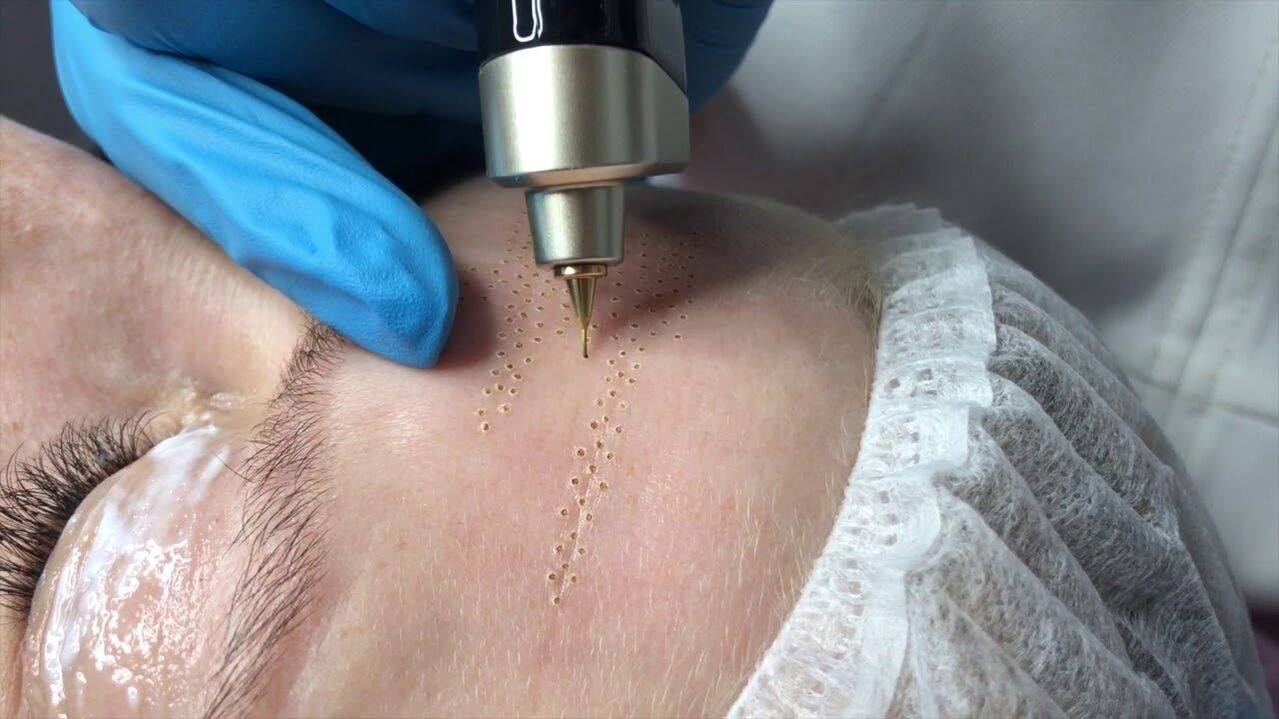Skin rejuvenation is the most popular area of modern aesthetic cosmetology. In addition, nowadays, more and more often, preference is given to non-invasive progressive exposure methods (without damaging the integrity of the skin) or even without contact. And one of the innovative and effective methods is plasma rejuvenation (non-surgical plastic).

Most, if not all, types of skin renewal are based on the principle of controlled alteration of the skin, causing the process of regeneration, which ultimately leads to a decrease in the visible signs of aging. The plasma method works the same way, but with a few tricks.
First, the active substance, plasma, is a high energy ionized gas. Second, the nitrogen used is chemically inert and suppresses tissue combustion, displacing the oxygen needed for the oxidation process. As a result, the layers of the skin are damaged by the plasma (due to heating, splitting and evaporation), but they do not burn as from the action of ablative lasers. As a result, no open sores are formed. This approach reduces the risk of side effects such as scarring, infections, and discoloration.
What to expect from plasma rejuvenation
Reduction of existing age-related changes, prevention of their progression and early onset. The procedure has a pronounced lifting effect (due to "evaporation" of the skin flap), smoothes the skin relief by reducing the depth of dynamic and static wrinkles, softening the course of natural folds, improves and evens skin tone. In addition, the result not only appears soon after the start of treatment, but also gradually increases over several months. The greatest effect can be expected after about 3 months.
Indications for use
- Non-surgical blepharoplasty.
- Stretch mark treatment and scar removal.
- Treatment of acne and post-acne.
- Removal of wrinkles around the eyes (crow's feet), around the mouth (pouch).
- Elimination of sagging skin: in the neck, abdomen (postpartum abdomen).
- Align the contour of the face.
- Removal of fibroids, nevi, papillomas, age spots, xanthelasm, dyskeratosis.
Contraindications
- Diagnosed oncological diseases of any localization.
- Presence of precancerous skin diseases in the affected area or suspicion of such. Other benign neoplasms are not a contraindication to plasma rejuvenation.
- ENT diseases in the acute stage (sinusitis and other forms of sinusitis, rhinitis, rhinosinusitis).
- Period of pregnancy. At the same time, the procedure has a fairly high safety profile, as it does not lead to systemic (general) changes and pronounced metabolic changes. And in medical publications there are reports of the successful use of plasma rejuvenation in women carrying a child. But it should be remembered that physiological hormonal changes during pregnancy affect the condition of the skin and can affect the effectiveness of the intervention.
- Breastfeeding period.
- Diseases of the blood, but at the same time the presence of mild iron deficiency anemia with satisfactory health is usually not a reason to refuse the anti-aging procedure.
- The acute period of infectious diseases, the presence of an increase in body temperature.
- Diseases of the thyroid gland, accompanied by local or diffuse hypertrophy of its tissues and / or hormonal changes.
- Renal and hepatic insufficiency.
- Cardiovascular diseases in the stage of decompensation.
How does the procedure take place
Plasma facial rejuvenation does not require special training, prior adherence to a diet or changes in the usual lifestyle. But a few days before the session, it is advisable not to use aggressive scrubs and peels, to go to a solarium, and people with a tendency to allergic reactions should not try new products and cosmetics.
When using the device, even patients with a low pain threshold do not need local anesthesia. The healing / rejuvenation session lasts 15-30 minutes, its duration depends on the severity of the problem and the area of the treated area.
The patient sits in a cosmetology chair or on a sofa, and the specialist performing the procedure, without contact, directs a pulsed flow or plasma flow from the end of the device onto her skin. At the same time, it is possible to choose the operating mode most suited to a given patient. The session usually begins with a pretreatment of the skin to prepare it for the subsequent stronger effects and to reduce the intensity of the sensations felt. Once the procedure is complete, the treated area does not need to be applied. For the next 3 days, it is advisable to refrain from scrubs, peels, visits to the beach and to the solarium.
The recommended number of procedures is 1 to 2 procedures per year.
























































